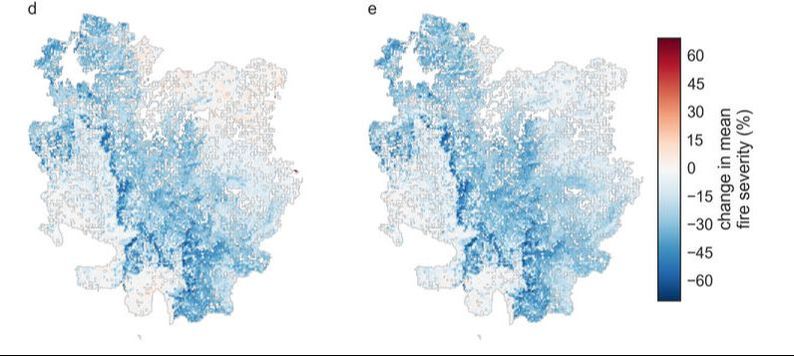|
Over a series of studies we have evaluated the carbon tradeoffs associated with treatments to reduce the risk of large, hot wildfires. In a 2008 study we posited that since large, hot wildfires release a considerable amount of carbon to the atmosphere because they kill trees and combust more plant material, thinning smaller trees and restoring surface fire would result in a net carbon benefit. The basis for this argument is that while thinning and prescribed burning both remove and release carbon from the ecosystem, the total carbon loss will be lower over time because when wildfire does occur the effects on the treated forest will be lower. One of the arguments against this line of thought was presented by John Campbell and colleagues in a 2012 paper. They argued that since we cannot predict exactly where fires will occur, more area will be treated than will burn in a wildfire and the net effect will be lower overall carbon storage. Building on our previous work where we looked at the effects of increasingly severe fire weather, we sought to determine if we could use our understanding of where fires are likely be hottest and kill the most trees to inform the placement of thinning treatments. In a recent study led by Dan Krofcheck, we ran simulations of the same Dinkey Creek watershed in the Sierra Nevada using projected climate data from four different climate models and projected fire weather. We used the simulations from the first Dinkey Creek study to identify the locations on the landscape that had the largest chance of being burned by hot, tree-killing fire. We then ran simulations where we thinned every location on the landscape that was legally and operationally available, meaning that these areas were not protected by law and the ground was not too steep to prevent thinning equipment from working. We called this the naïve scenario because it assumes that no prior information exists about where best to locate treatments. In reality, that is not how treatments are located. Forest managers use all kinds of information to inform the location of their treatments. In the optimized case, we only thinned areas of the landscape where there was a higher chance of stand-replacing fire. Importantly, we simulated prescribed fire to all forests where it is ecologically appropriate in both scenarios. The results show that in terms of reducing the chance of stand-replacing fire, both scenarios performed almost exactly the same. In areas where the chance of high severity fire is high, both the naïve and optimized scenarios had the same reduction in fire severity when compared to the no-management scenario. Both management scenarios also reduced the variability in carbon loss from the system because there were fewer stand-replacing fires. However, because we only thinned the highest risk places in the optimized scenario, we ended up thinning approximately 60% less area than in the naïve scenario. This resulted in much lower carbon loss from the system at the beginning of the simulations and an overall lower total carbon loss than both the no-management and naïve scenarios. This research demonstrates that if we inform our treatment locations based on where we have the highest risk of stand-replacing fire, we can treat much less of the landscape with thinning and reduce both carbon loss from treatment and carbon loss from wildfire.
0 Comments
Your comment will be posted after it is approved.
Leave a Reply. |
Details
Archives
October 2023
Categories
All
|




 RSS Feed
RSS Feed